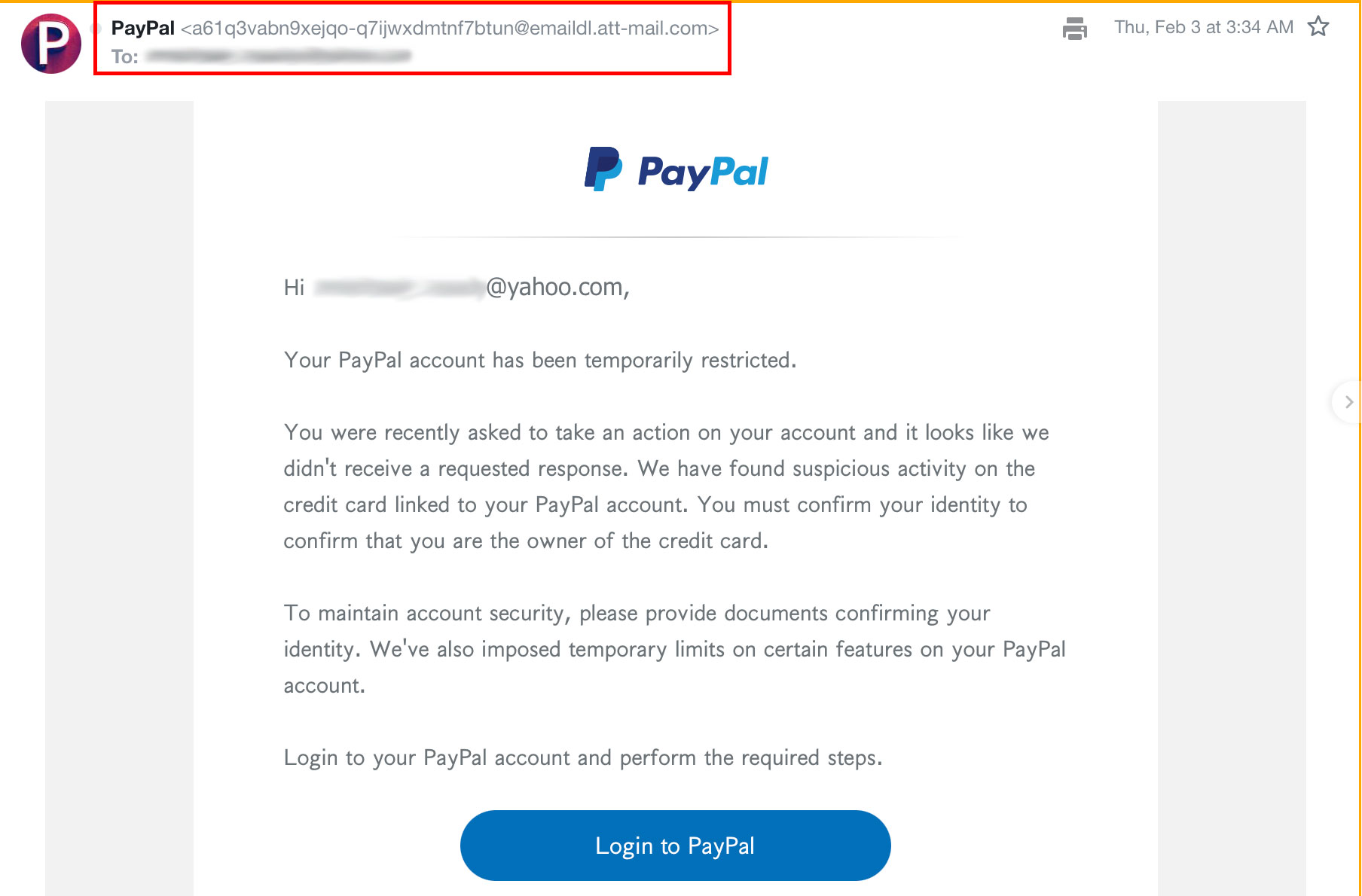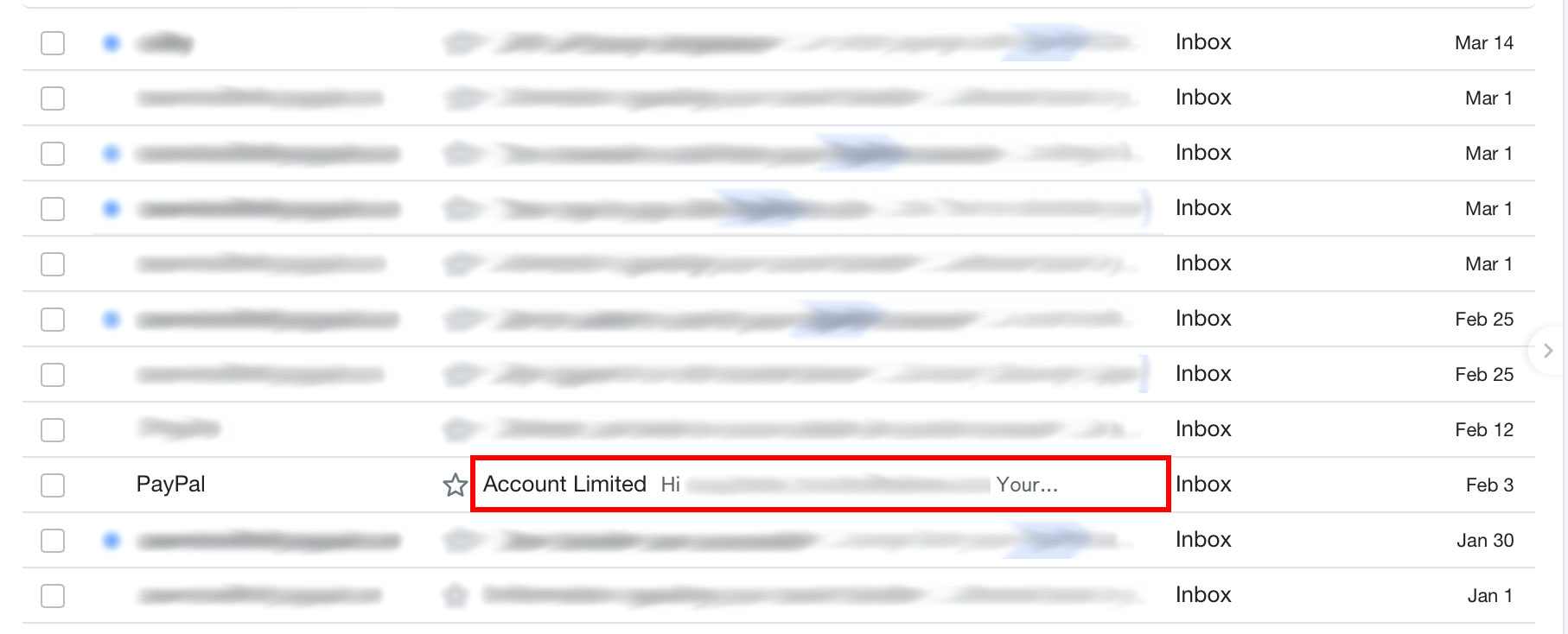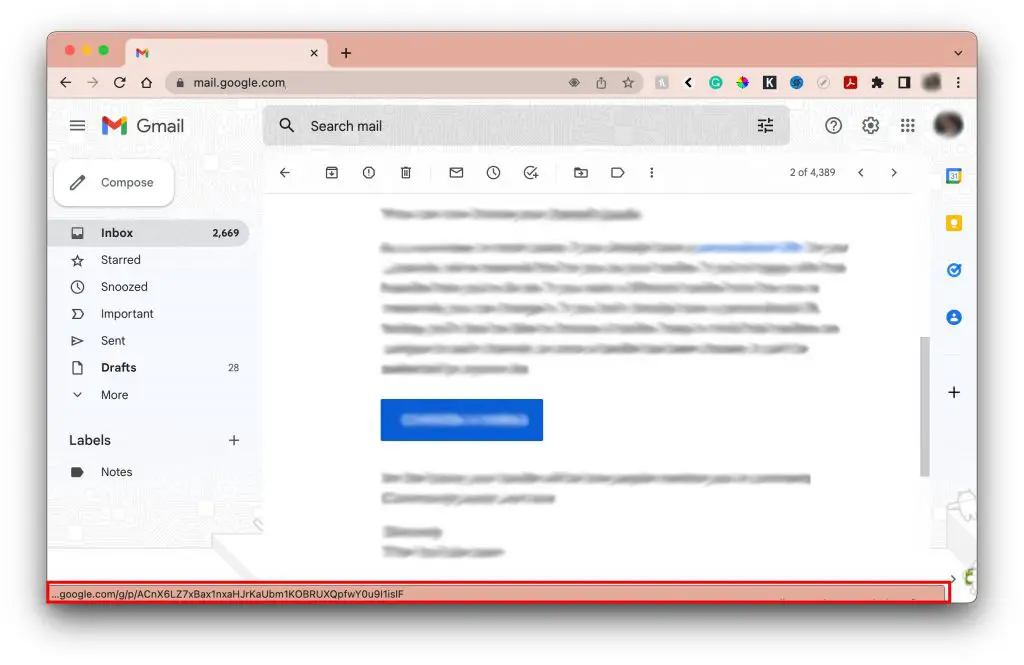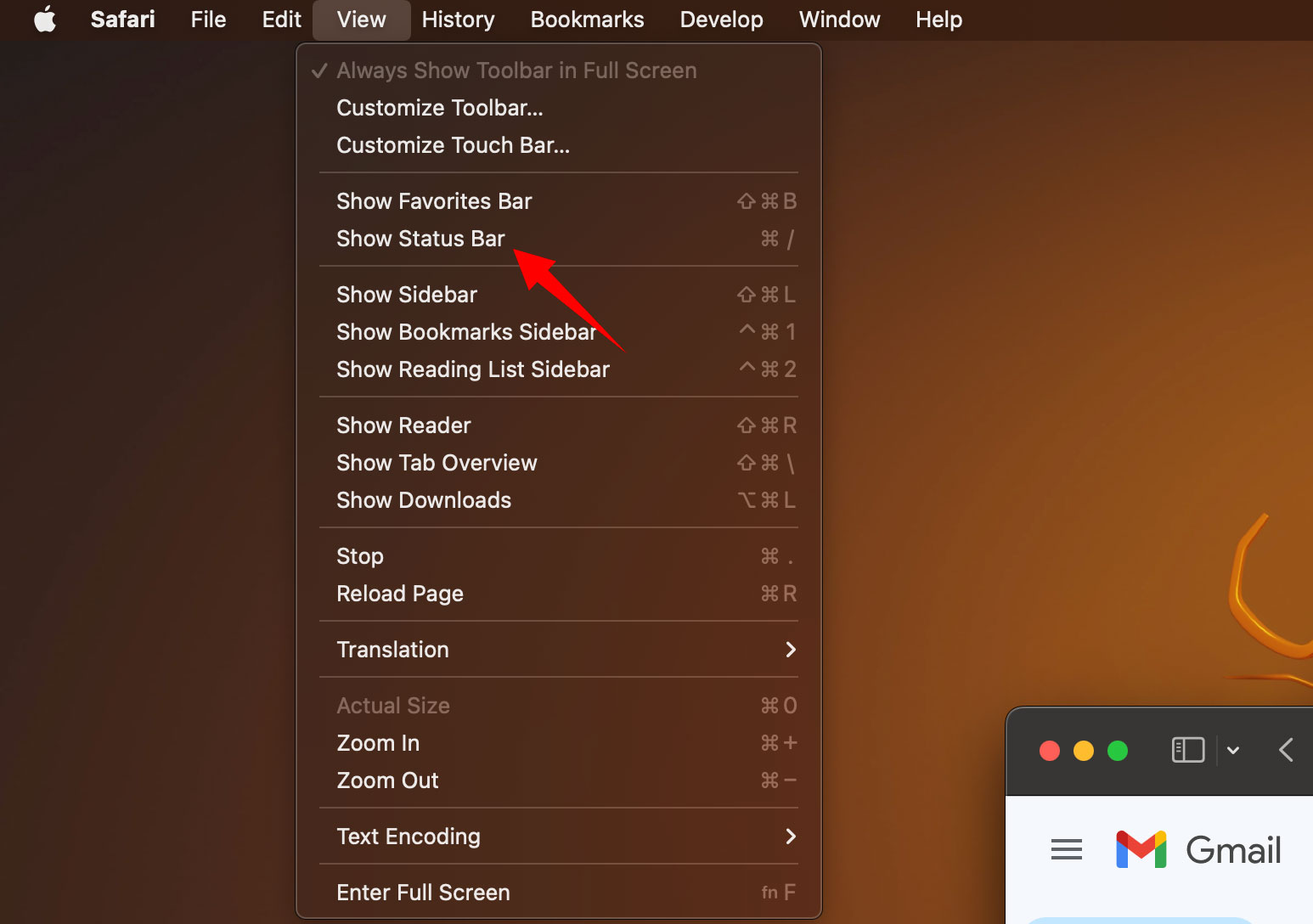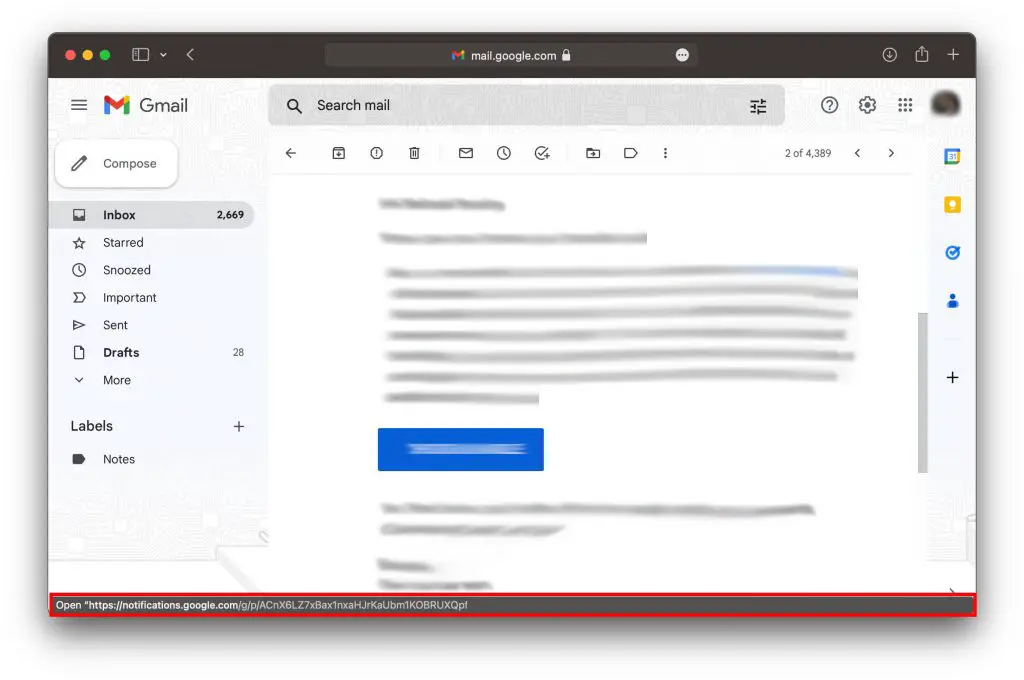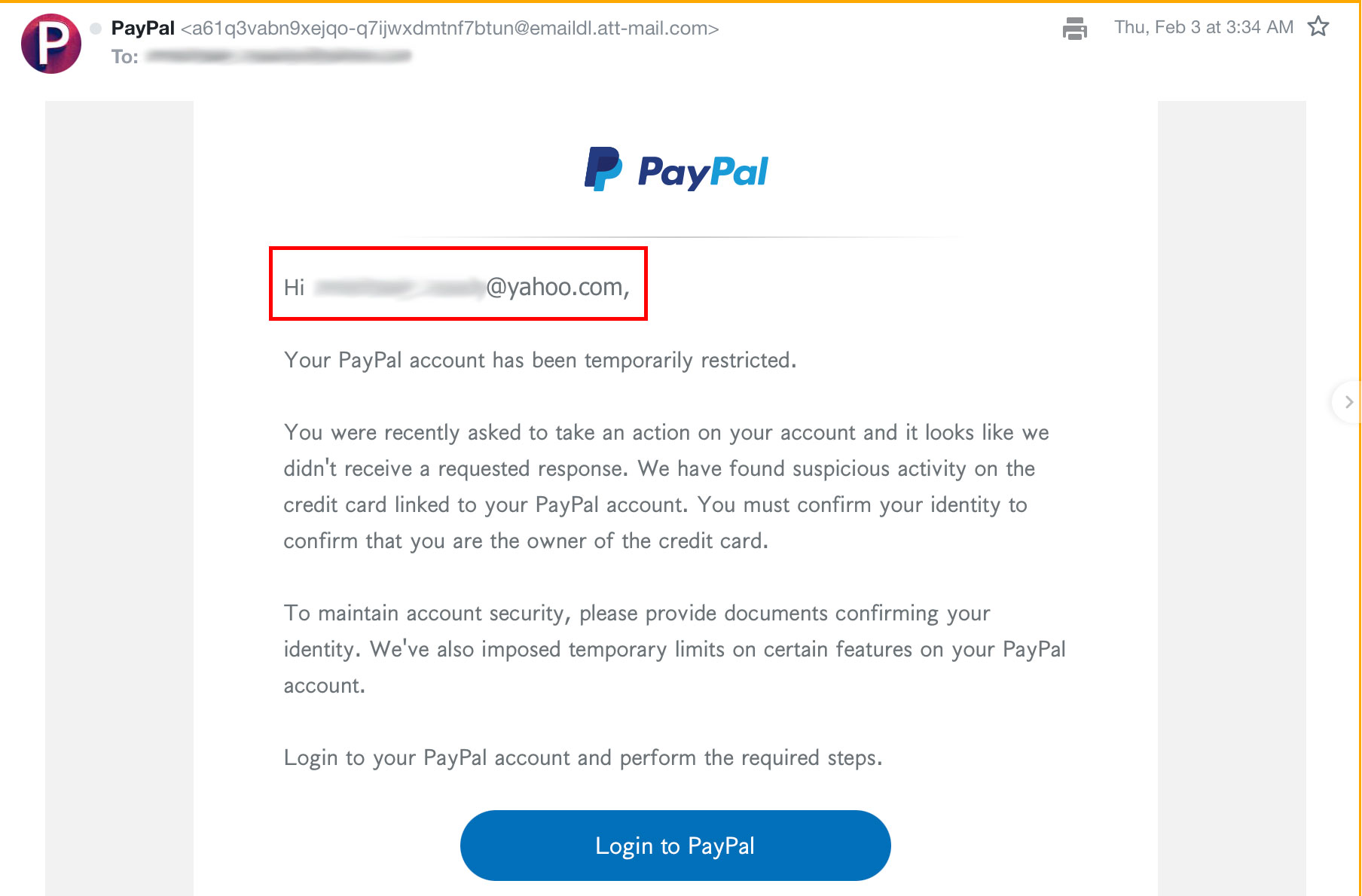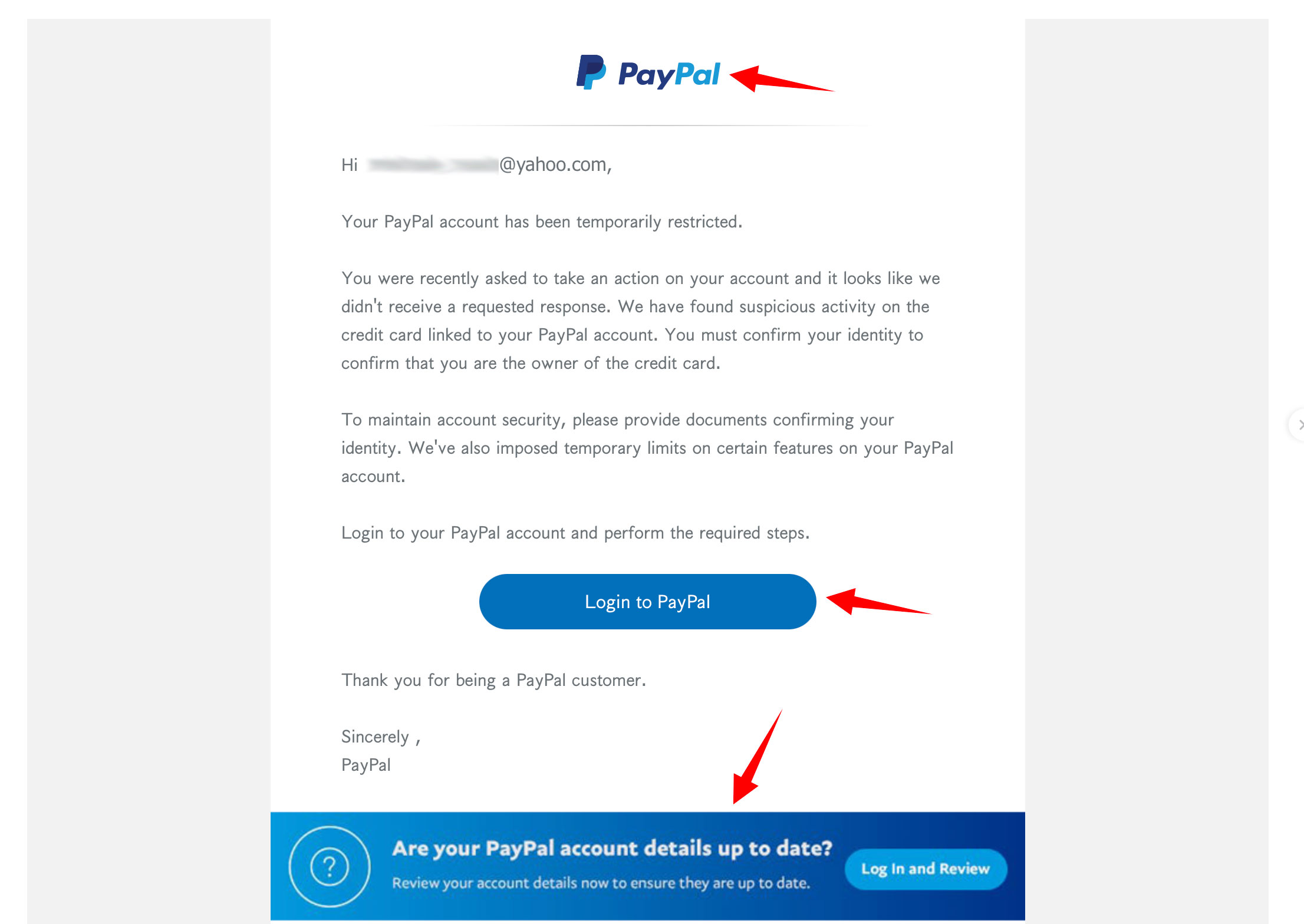No, since Gmail does not support scripting, you cannot get a virus by simply opening an email. However, it is possible to get a virus by interacting with the links or attachments within a suspicious email.

In this article, I will show you eight tell-tale signs of potentially dangerous emails.
1 – Illegitimate Email Addresses
If you think you have opened a potentially harmful email, check the sender’s email address and confirm that it is their legit email address.
Malicious emails are sent using email addresses that closely resemble the email addresses of legit people or companies.
For emails that seem to come from friends, family members, or co-workers, always compare the email address with the legit one belonging to the person.
For emails that seem to be coming from a company, check the part of the email address that contains the domain name.
A legit email from a company will come from an email address that uses a private domain such as [email protected]. A harmful email will come from an email address that starts with the company name and ends with gmail.com, yahoo.com, or some other mailing service.
2 – Misleading Email Subjects.
Most harmful emails contain subject lines that invoke fear, urgency, or excitement to get you to interact with a link or attachment within it.
If you think you have opened a malicious email, look out for subject lines that ask you to:
- Update your billing information.
- Change or confirm your password.
- Make a Payment.
- Reset or unlock your account.
- Redeem a prize you have won.
- Confirm a reservation that you never made.
- Account Limited
3 – Deceptive Embedded Links.
Links embedded within emails that can cause your device to become infected by a virus will lead to websites that are different from the one stated in the anchor text of the link.
For example, an email that asks you to update your PayPal information will contain a login to PayPal button that leads to a website that is not PayPal.
If you become suspicious about any embedded links within an email, you should check where they lead before clicking them.
You can preview a link in Google Chrome or Mozilla Firefox by hovering your mouse pointer over the suspicious link. At the bottom of the browser window, you will see the URL of that embedded link.
If you are using Safari, you will need to enable the status bar before you are able to preview links.
Enable the status bar by clicking on the view option in the menu bar. In the dropdown menu, select the show status bar option.
Alternatively, you can use the keyboard shortcut command + slash.
Once the status bar is enabled, hover your pointer over the suspicious link to see its URL at the bottom of the safari window.
4 – Unusual Email Body
Harmful emails are usually not well written. They may also contain weird greetings and text unrelated to the subject line.
If you think an email may be dangerous, review its content and make sure that it is in line with the following:
- Pay close attention to how the sender greets you. A friend or business will greet you by your first name. A malicious person will address you by your email address or a collective noun.
- Ensure that the email is well-written and free of grammatical errors; or spelling mistakes.
- Check to see if there are many random links throughout the text of the email.
- Check if the content within the email is in line with its subject.
5 – Bad Email Design
Some senders of malicious emails will try to copy the design of legit company emails but will often do a poor job of mimicking the design.
While some can be convincing, you can often see mistakes such as incorrect logos, brand colors, button shapes, fonts, and low-resolution images.
If you are having a hard time spotting these mistakes, you can always compare the email with a legitimate one that you received in the past.
6 – Weird Attachment Names Or Dangerous File Extensions
Never download attachments from emails that you think are dangerous. Especially if the attachment file extension is any of the following:
- .zip
- .rar
- .exe
- .dmg
Or any of the blocked file types listed in this table.
Even if the attachment has a familiar file extension like .pdf or .docs, people with malicious intent can still embed these files with a virus.

